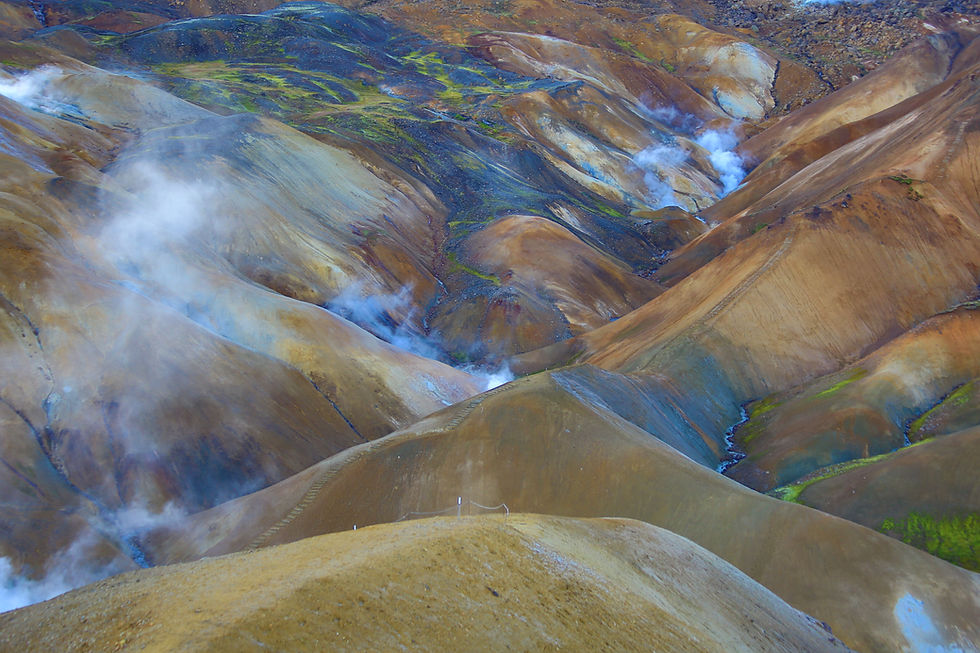Pinnacles National Park, California
- Mar 1, 2022
- 4 min read
Updated: Aug 17, 2023
The state of California boasts of having the most number of national parks compared to other states, and the Pinnacles is its latest addition, bringing the total count to 63 nationwide; of which 9 are in California. Coming in at just 42 square miles, it is one of the smallest national parks in America. No doubt it is small in comparison size with the others, but it certainly packs a punch and is a real hidden gem for Californians. Originally established as a national monument in 1908 by President Theodore Roosevelt, it was re-designated as a national park in 2013 by then President Obama. The park itself is located on the San Andreas fault line in central California, just 140 miles south of San Francisco and 80 miles from the Pacific Ocean. It is part of the Salinas Valley and it is known for the eroded spires of which it is named after.

There are 2 main entrances - the east and west. We arrived through the east entrance, and was immediately surrounded by the rolling hills within the park. We passed by several camping grounds, and they were bustling with campers and hikers. Parking was difficult, but we managed to snag a spot right next to the Bear Gulch Trail that eventually took us to the top of the pinnacles via High Peaks Trail; the premier trail in this park. From the start, the views slowly come into being, as we worked our way to the top via a well graded switchback trail. Many sections of the trail was literally carved out from the side of the sheer rocky walls, which made us look tiny and vulnerable. The initial low grade climb led us out into an opening flat with some interesting monoliths and rock formations. These must have been grounded down by wind and water through the ages. Many of these made for some interesting climbing. In fact there was one that reminded me of the dislodged rock that is a famous photo opportunity in Norway called Kjeragbolten. I couldn't resist climbing to the top of it!

From here, there are a couple more switchbacks before we hit the High Peaks Trail. Along the way we marveled at the many pinnacles and rock features, which included a rock tunnel that gives off a cool echoing sound when you walked through it.

Once we reached the top of our steady climb, we finally arrived at the High Peaks Trail. Here we were greeted by amazing views across the pinnacles, surrounding valleys and hills. There were also many Californian Condors soaring gracefully high above the pinnacles. They were huge in the sky above us, displaying their broad wingspan and white plumage. Many of them would fly for miles to the Pacific coast in search of carrion for food, and then they would make the journey back here to the pinnacles to nest and tend to their young. It was from these birds that man got the idea of being able to soar high and free. It was nice to see so many of them free in the wild.

Many visitors come here specifically to experience the High Peaks Trail. It is not for the feint of heart or those who are easily intimidated by heights. From here, the trail goes through a series of steps cut directly in the rocks, with some parts over very narrow overhangs and ledges.

Nothing too technical but in some places pretty vertical. The good news is that there are well placed iron railings alongside these steep steps.

For those who are not comfortable with heights and tight spaces, they can take a detour route through a tunnel that bypasses this section from below. In classic national park fashion the National Park Service tries to provide access to all visitors of all capabilities. This highlight section of the park consists of many tall monoliths, of which the highest point on this trail at 2,638 feet.

At the end of the High Peaks Trail, we took the Condor Gulch Trail down to make a complete loop to the parking lot where we started. In the gulch we could look up to where we scaled through the pinnacles on High Peaks.

While making our way down, we could see that it was still a long way back to the car. The sun was setting, and the ambient temperature dropped quite a bit. The last section rounds the foothills and gives way to some grassy meadows before converging on the park road and spread out parking spots.
All in all, we had a fantastic time hiking into the past where these rock formations were once part of the San Andreas Fault along the boundary of the Pacific Plate and North American Plate. These tectonic plate movements took place over 23 millions years ago, and here is the living testament of what's left behind. It is truly a hidden gem and a wise decision to make it into a national park to be preserved, enjoyed and appreciated for many generations to come.
We have to return though, as we only saw High Peaks. We still need to visit the many "caves" in the area - which aren't really caves in the conventional sense but rather gulches in which rocks fell into and formed the rocky roofs of these cave. We still need to see the protected bats and the reservoir lake. The Pinnacles is a climber's heaven. Something to look forward to for the next time!











Comments